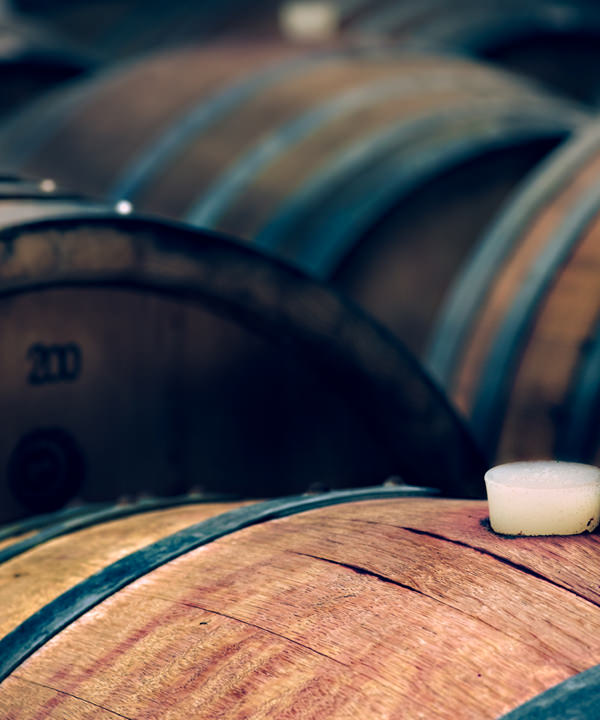If you’ve ever found that a once-perfectly ripe banana is now unpleasantly spotted, or if you’ve ever painstakingly scraped a brown film off a half-eaten avocado for lunch, you’ve experienced oxidation. Just as the process can render food inedible, it can hamper winemaking and drinking as well. In fact, “oxidation” is counted as a fault in the Court of Master Sommeliers deductive tasting format. But not all oxidation is equal, and though they sound similar, there’s a difference between oxidized and oxidative wines — and you should definitely be drinking the latter.
Oxygen is necessary to wine and the winemaking process. But there’s a tipping point. According to Jancis Robinson, oxidized wine is defined as wine that has been “harmfully exposed to oxygen.” As soon as oxygen comes into contact with wine, it begins to break it down. This process can be harmful if a winemaker doesn’t take care to limit exposure while the wine is in the cellar, or if a cork isn’t quite airtight enough due to improper storage. Wink Lorch notes in her book “Jura Wine“ that oxidized wine “has unpleasant flavors and ages prematurely.” Think of a lack of freshness, or muddled, diminished, or even cooked-smelling primary fruit notes, and even a brownish color, mimicking the look of that leftover avocado.
The same basic concept is at play when it comes to oxidative wines. But the distinction comes down to both intention and control. As Lorch writes, “‘Oxidative’ is a term denoting a white wine that has been deliberately exposed to oxygen, usually by not topping up the barrels regularly.” The key word here is deliberate; a wine can become oxidative, rather than oxidized, when a winemaker intentionally allows oxygen to interact with the wine during the winemaking process. There must also be moderation; the winemaker must take care to monitor the oxidation in order to prevent the wine from becoming harmfully affected by oxygen and therefore oxidized.
But why would winemakers want to allow oxygen to interact with their wines at all? After all, it’s taken the wine industry centuries to develop the technology to prevent oxidation! Is there even a point to oxidative winemaking? Some winemakers insist that, yes, controlled oxidation can add richness, complexity, and desirable, umami-driven aromas and flavors to white wines in particular. If preventing oxidation highlights primary notes like fresh fruit, floral, and herbal notes, oxidative winemaking does the opposite, bringing layer upon layer of savory, earthy, nutty aromas and flavors to the wines. The key is balance. Allow those secondary flavors to overpower the primary ones, and a winemaker will have swung too far toward creating an oxidized wine.
While there are several wines known for their use of oxidative winemaking — sherry and Madeira, for instance — no single region embraces this process more than the Jura in eastern France. Though it’s only about an hour from Burgundy’s Beaune, Jura does things a little backwards when it comes to white wines. Generally, Jura’s whites fall into one of two families, as outlined by Lorch. the first is a non-oxidative style of winemaking known as floral or ouillé, a word that even native French speakers have difficulty pronouncing at times. The second is a historically more common oxidative style of winemaking, known as the sous voile, tradition, and typé techniques.
The latter is most highlighted in Jura’s signature wine: vin jaune, translated literally as “yellow wine.” This wine gets it characteristic hue and complex, savory, textured style by the use of sous voile aging. In this technique, the vin jaune, made from 100 percent Savagnin grapes, is cellared in old oak barrels and allowed to age without adding any more wine to the barrel as some of it evaporates. A gap then forms between the wine and the top of the barrel, allowing oxygen to reside and interact with the wine. Eventually, a veil (or voile) of yeast forms on top of the wine, protecting it from extreme oxidation. Thus, the wine is oxidative, exposed to and affected by oxygen in a limited, beneficial way, but not oxidized.
Of course, vin jaune can become over-oxidized if a winemaker isn’t careful, a risk that the color of the wine can betray. While vin jaune tends to carry a hefty price tag and intensity not necessarily apropos for everyday drinking, many Savagnin, Chardonnay, and blended wines from the Jura are excellent introductions to the unique flavors and textures of oxidative wines. The winemaking technique isn’t generally listed on the labels of these wines, but steer clear of those labeled as ouillé. This is a definite indicator that the wine was made in a clean, non-oxidative style.
